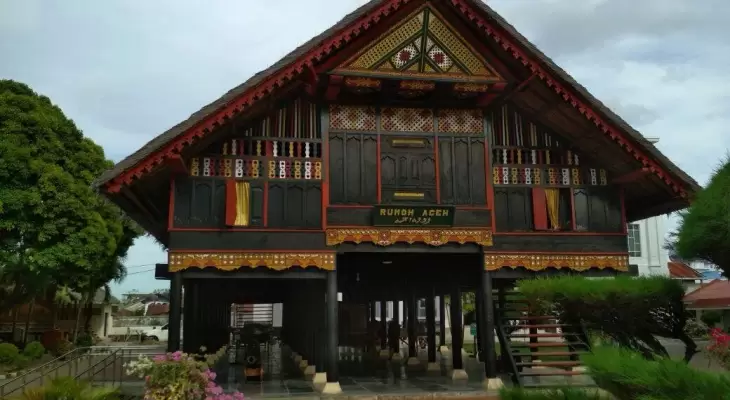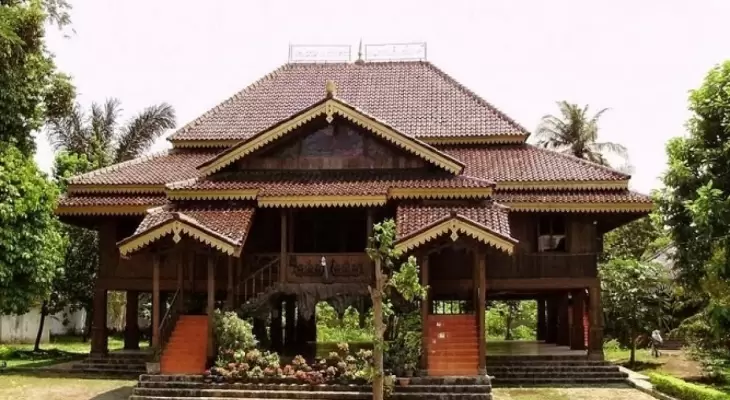Sumatra Traditional House, Full of Meaning

Holiday Ayo - From Aceh to Lampung, Sumatra comes with a row of unique and meaningful traditional houses. In fact, some of them have a history that is quite attached to this day.
Before you visit these beautiful traditional houses, it's a good idea to know the history of this traditional house in Sumatra.
LIMAS HOUSE, PALEMBANG

Limas house is a traditional house typical of South Sumatra Province. From the name, it is clear that this house is in the shape of a pyramid. The materials for making walls, floors, and doors use unglen wood or ironwood and tembesu wood.
While the pillars of the house use tembesu wood and a mixture of cement so that it is waterproof and very sturdy.
You can really feel the cultural value of Palembang from the carved ornaments on the doors and walls. A very strong custom underlies the construction of the Limas House.
The level owned by this house consists of 3 (three) levels called gravestones. This is a symbol of the level of social life, namely age, type, talent, rank, and dignity. The level of the Limas House indicates a person's lineage or position, namely Kiagus, Kemas, Masagus. Then the first one is for the high class, namely the Raden.
RUMAH GADANG, WEST SUMATERA

As an icon of West Sumatra Province, Rumah Gadang is a special attraction.
So famous, Rumah Gadang had appeared on the back of the IDR 100 coin issued by Bank Indonesia in the late 70s. Rectangular shape without symmetry, Rumah Gadang has a unique building design. Impressed swooping up, the exterior of the building slightly tilted outwards. Rumah Gadang is built in accordance with its customary provisions which adhere to a matrilineal system. Where the line of descent comes from the mother so that women hold the highest degree in life.
RUMA BOLON, NORTH SUMATRA

If you visit Lake Toba, you will find a row of Ruma Bolon around it. Yep, Bolon is a traditional Batak house which is also a symbol of the social status of the Tapanuli community. This Batak traditional house consists of 2 main buildings, namely Ruma (residence) and sopo (rice barn).
The location of the two is opposite each other, separated by a large courtyard that functions as a space for the activities of its citizens.
This traditional house is in the shape of a rectangle with the inside plan being an open space with no rooms or partitions. What makes it unique is the decoration on the entrance frame in the form of carving eggs and arrows. The sloping wall ties (ret-ret ropes) are made of fibers or rattan which form a pattern like a lizard with two heads opposite each other.
Krong Bade, BANDA ACEH

The Aceh region also has a unique traditional house, Krong Bade. Also known as Rumoh Aceh, Krong Bade has one room below it like a house on stilts. Usually, the lower room of this house is used for food storage. In addition, there is also a designation as a place for women to carry out activities, such as weaving Acehnese cloth.
This traditional house looks made of wood, except for the roof made of sago palm leaves or woven palm leaves. For the floor, Rumoh Aceh uses materials from bamboo. Krong Bade also has a staircase in front of his house. Uniquely, the number of stairs in this house is odd. This indicates the nature of the aceh and religious people.
NUWO SESAT, LAMPUNG

The people of Lampung must be very familiar with Nuwo Sesat. This Lampung traditional house often functions as a place for meetings and deliberation.
For this reason, Nuwo Sesat is also known as the Great Hall Heresy. Nuwo Sesat consists of several parts of the building, such as the Ijan Geladak as the entrance ladder, the Pavilion used for small-scale meetings, the Pusiban for official dialogue activities, to the Tetabuhan Room, a place to store traditional musical instruments. From the outside, Nuwo Sesat looks like a house on stilts.
It was realized in the form of a house on stilts because of the geological conditions of the Lampung region which is prone to earthquakes, so the architectural design must be made so that it is earthquake resistant.








Leave a comment